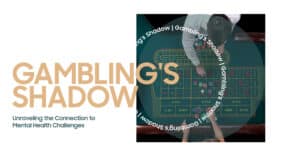Mania vs Anxiety: Understanding the Differences and Connections
Understanding Mania
Mania is a mental health condition marked by an abnormally elevated, expansive, or irritable mood. It commonly appears in bipolar disorders, specifically during manic episodes. According to the DSM-5 criteria, an episode of mania must last at least one week, involve heightened energy levels, and affect social or occupational functioning.
The clinical picture of mania often includes a disturbance in mood, with increased activity and impulsivity. People with manic-depressive illness can experience extreme mood swings, from mania to severe depression. Mania is not just an elevated mood but a profound shift in the person’s entire state of being.
Behavioral Symptoms: Hyperfocus and Racing Speech
Mania often leads to hyperfocus on specific projects or ideas. During a manic episode, individuals might stay up all night working intensely on tasks without rest. Racing speech is also common, where thoughts move faster than normal, making conversations difficult to follow.
People might dominate conversations or jump rapidly between unrelated topics. These manic symptoms often lead to social challenges, strained relationships, and professional difficulties. In bipolar disorder patients, such behaviors are significant markers for diagnosis.
Physiological Symptoms: High Energy Levels and Sleep Issues
High energy levels characterize manic states. Even without adequate sleep, a person in a manic episode feels full of energy and motivation. They may report needing only 2-3 hours of sleep but still feel rested, contrasting sharply with the fatigue seen in depressive disorders.
Disturbances in sleep-wake cycles can worsen manic behaviors. In studies published in BMC Psychiatry, disrupted social rhythms often correlate with heightened manic activity. Sleep deprivation during mania often precedes hospitalization in severe cases.
Impulsive Behaviors during Mania
Mania frequently involves poor judgment and impulsive actions. Individuals may engage in reckless spending, substance abuse, or risky sexual behavior. These actions reflect the impaired decision-making common in affective disorders.
Drug abuse during manic states worsens the course of bipolar illness. The Florida Medicaid Drug Therapy Management Program highlights that impulsive spending and drug use during manic episodes often delay recovery and increase the risk of a future episode of depression.
Understanding Anxiety
Behavioral Symptoms: Disorganization and Restless Pacing
Anxiety, particularly in generalized anxiety disorder and social phobia, presents with disorganization and fidgety movements. Individuals often pace back and forth, unable to relax or stay focused. Unlike goal-directed hyperactivity in mania, anxiety-driven activity is restless and purposeless.
This behavior disrupts daily life, making it hard to complete basic day tasks. In clinical studies, anxiety correlates with reduced workplace productivity and strained interpersonal relationships. Anxiety’s disorganization differs from the goal-oriented energy seen in mania.
Physiological Symptoms: Fatigue and Sleep Disturbances
Chronic anxiety leads to extreme fatigue due to constant hyperarousal. Even with long periods of sleep, individuals report feeling tired, unrefreshed, and cognitively sluggish. Studies using the Depression Rating Scale show that sleep quality is often significantly worse in individuals with high anxiety item scores.
Sleep disturbances, including insomnia and early awakening, are primary symptoms of panic disorders and post-traumatic stress disorder. Fatigue worsens symptoms of anxiety, creating a cycle of poor sleep and increased worry.
Hypomania: A Subset of Mania
Characteristics of Hypomania
Hypomanic episodes are milder than full-blown mania but still involve elevated mood and increased activity. Hypomania lasts at least four days but does not cause marked impairment in social or occupational functioning, according to DSM-5 criteria.
While hypomania can enhance productivity and creativity, it remains a symptom of bipolar disorder. In particular, it defines Bipolar II disorder, where individuals experience hypomanic episodes and episodes of depression, but not full manic states.
Creativity and Sociability in Hypomania
During hypomania, creativity often surges. Many individuals report writing prolifically, painting, or engaging in business ventures. Sociability increases too, with individuals seeking out social activities and new friendships.
However, without monitoring, hypomania can spiral into full episodes of mania. The shift from functional productivity to risky impulsivity can be subtle and often requires a healthcare professional for assessment and management.
Distinguishing Mania from Anxiety
Major Differentiators
The major difference lies in energy direction. Mania channels energy into focused or grandiose projects, while anxiety disperses energy into worry and avoidance. Mania produces a euphoric or irritable mood, whereas anxiety results in nervousness and fear.
The clinical significance of distinguishing mania from anxiety is crucial in diagnosis. Misinterpreting symptoms can lead to incorrect treatment plans and worse treatment outcomes.
Overlaps and Common Misconceptions
Both mania and anxiety can cause sleep problems, restlessness, and difficulty concentrating. Mixed depression or mixed mania complicates diagnosis, blending manic energy with depressive sadness or anxious fear.
Patients with mixed episodes often present a confusing clinical picture. Understanding these overlaps is critical for creating effective treatment plans and managing comorbid conditions.
The Connection Between Anxiety and Mania
Anxiety as a Symptom or Precursor to Mania
Research shows that anxiety at baseline can predict manic episodes. High baseline anxiety measures increase the likelihood of future episodes of mania or hypomanic episodes in individuals predisposed to bipolar disorder.
Anxiety may worsen as individuals approach a full-mood episode. Tracking anxiety item scores can help clinicians anticipate mood shifts and intervene early.
Mixed States: When Mania and Anxiety Co-exist
Mixed states involve simultaneous manic and depressive symptoms, often with severe anxiety. Dysphoric mania is one such state where manic energy combines with profound distress and agitation.
Patients experiencing mixed mania have higher rates of hospitalization and suicide risk, according to studies in Arch Gen Psychiatry and Acta Psychiatr Scand.
Bipolar Disorder and Anxiety
Anxiety in Bipolar Mania with Depressive Symptoms
Anxiety frequently accompanies depressive phases of bipolar depression. Patients often experience panic attacks, generalized worry, and fear during an episode of depression. This type of comorbid anxiety complicates the treatment of bipolar disorder.
Management must address both mood and anxiety symptoms to avoid treatment failure and improve remission rates over follow-up weeks.
Episodic Nature and Baseless Anxiety in Bipolar Disorder
Anxiety in bipolar disorder often appears without external cause, known as “baseless anxiety.” It contrasts with situational anxiety seen in standard anxiety disorders. Such anxiety complicates the clinical course and worsens the severity of mood swings.
Baseline studies show that the proportion of weeks spent in anxiety correlates with lower remission and greater disability.
Physical Effects of Bipolar Anxiety
Impact on the Body
Persistent anxiety stresses the cardiovascular system, increasing the risk of heart disease. It also weakens the immune system, making individuals prone to infections. Chronic stress hormones damage tissues and worsen overall health.
Long-term Health Implications
Comorbid anxiety predicts poorer outcomes in bipolar disorder treatment plans. It leads to greater functional disability, longer hospitalizations, and lower chances of sustained recovery. Managing anxiety effectively is essential for improving treatment outcomes.
Treatment and Support Options
Therapy Solutions
Behavioral therapy, Family therapy, and Social Rhythm Therapy help manage both mania and anxiety. Structured therapy reduces daily life disruptions caused by mental disorders.
Therapies focus on maintaining regular sleep patterns, stabilizing mood, and improving social functioning. Online psychiatry platforms now make these therapies more accessible.
Medications and Their Role
Medications remain a cornerstone of bipolar and anxiety management. Mood stabilizers like lithium, anticonvulsants, and some antipsychotics control manic and depressive episodes. Anxiety medications like SSRIs and benzodiazepines are used cautiously due to the risk of triggering manic episodes.
Finding the right medication balance under a healthcare team is critical for managing lifelong conditions like bipolar disorder.
Lifestyle Adjustments
Daily strategies include deep breathing exercises, regular exercise, healthy eating, and stress management. Stabilizing social rhythms and sleep-wake cycles can prevent relapses of mood episodes.
Using mood-tracking apps and staying connected with a mental health professional improves long-term stability.
Conclusion
Mania and anxiety differ but often overlap in bipolar illness. Accurate diagnosis and integrated treatment addressing both mood and anxiety symptoms offers the best chance for recovery. Addressing bipolar disorder symptoms early and managing comorbid anxiety improves the quality of life and reduces the burden of these psychiatric disorders.
Treat Mental Health Tennessee offers customized care plans for individuals experiencing mania, hypomania, depression, and anxiety. Our team uses evidence-based therapies and medications tailored to individual needs.
Reach out today for expert help managing your mental health condition and improving your daily life.
FAQ's
Yes, mania can occur without anxiety. Some individuals experience pure euphoria, grandiosity, and hyperactivity without any underlying fear or worry.
Certain anxiety medications, like SSRIs, can trigger or worsen manic episodes in people with bipolar disorder if not carefully monitored by a doctor.
Mood shifts can happen within hours or days in conditions like rapid-cycling bipolar disorder or mixed episodes, making symptoms overlap and intensify quickly.
Managing anxiety early may reduce emotional triggers that could escalate into mania, but it does not fully prevent manic episodes in diagnosed bipolar disorders.









